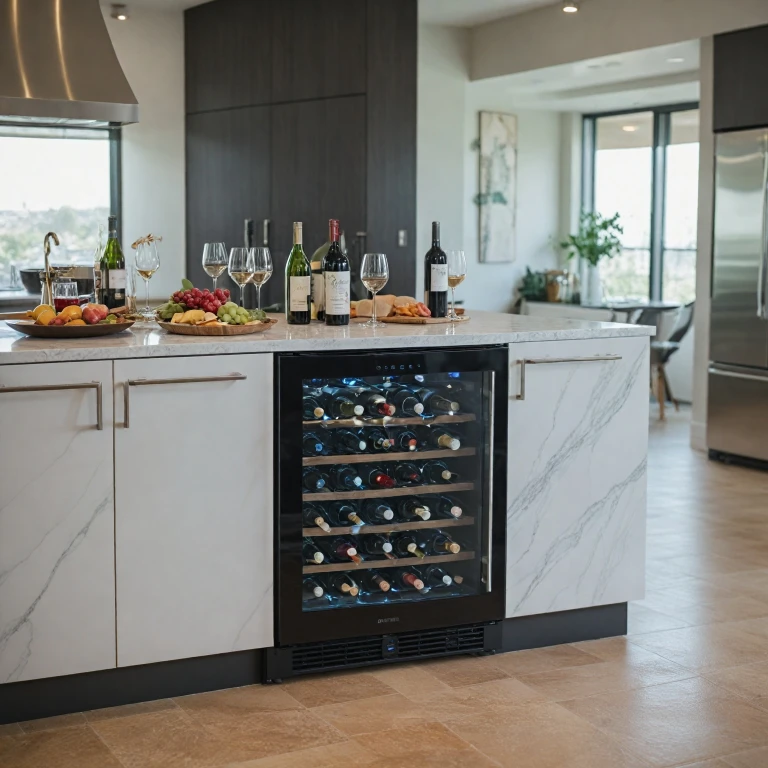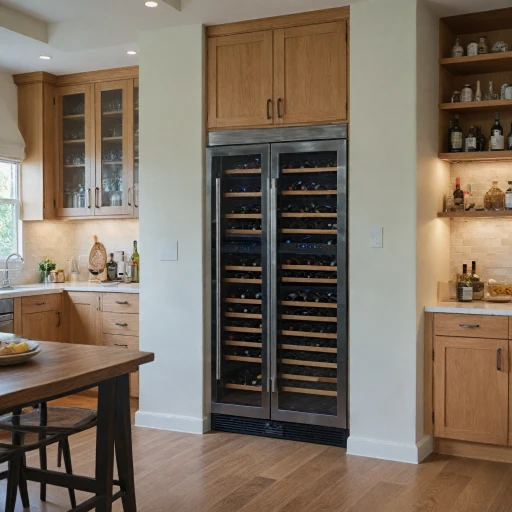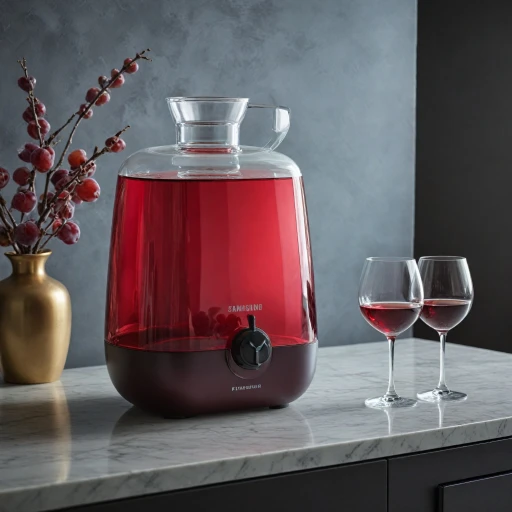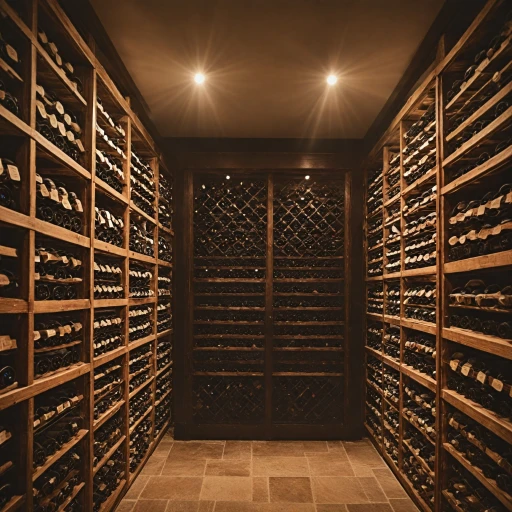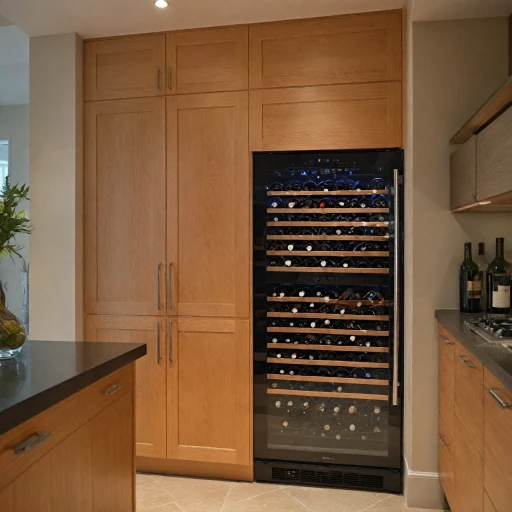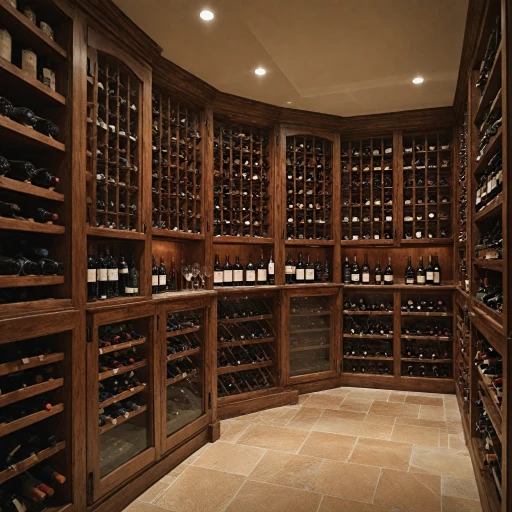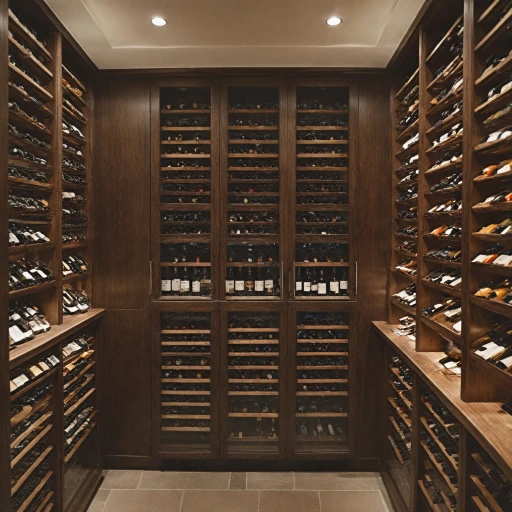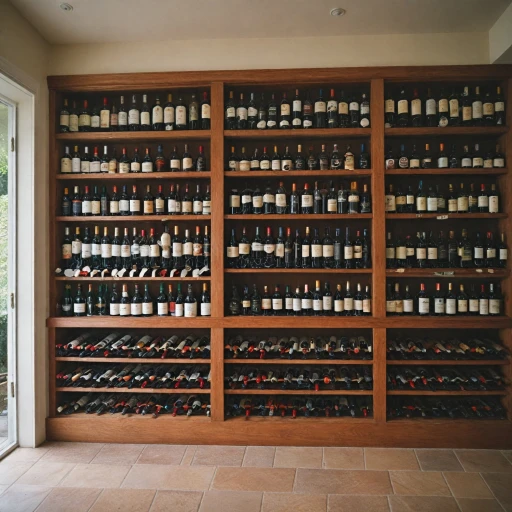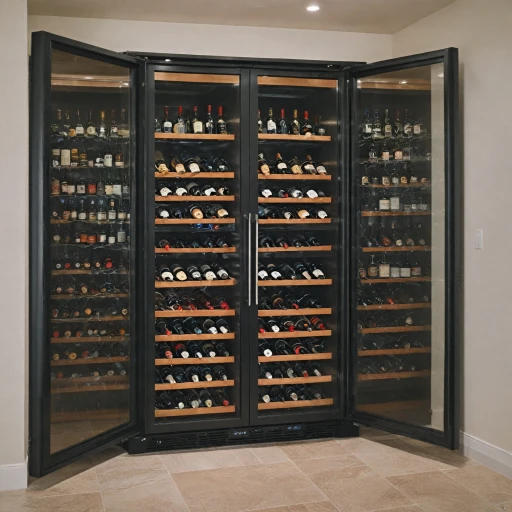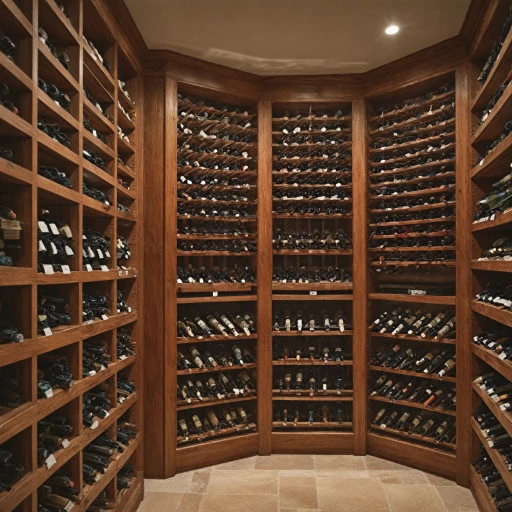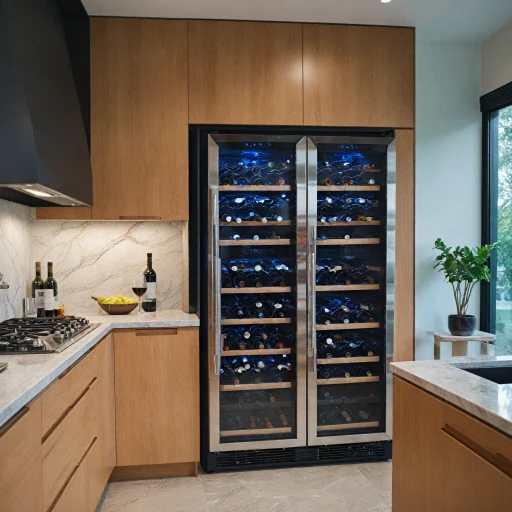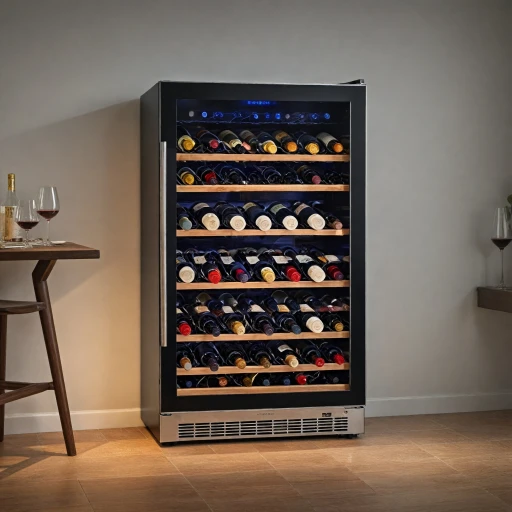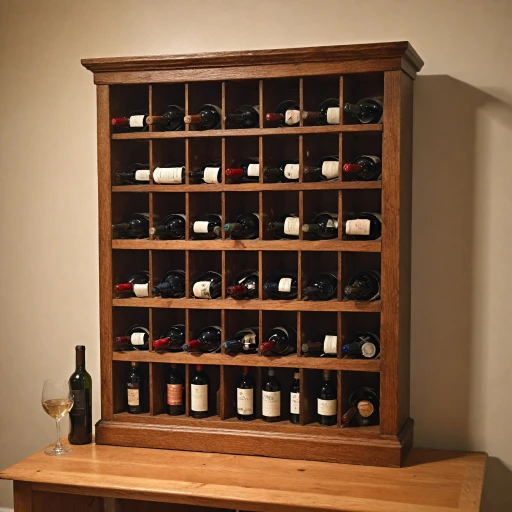
How Thermoelectric Cooling Works
Exploring the Basics of Wine Cooling Technology
At its core, thermoelectric cooling leverages the Peltier effect, a groundbreaking method for reducing temperatures without relying on traditional coolants. This innovative technology is a game-changer, differentiating itself from the more conventional compressor systems commonly found in wine cellar cooling units. By utilizing heat pumps, a thermoelectric wine cooler effectively circulates air to maintain the desired temperature inside the cabinet.
Understanding how this mechanism works provides deeper insights into why it's a popular choice for wine enthusiasts. The thermoelectric process is quieter, free of vibrations, and poses less harm to the environment, unlike its compressor counterparts. These benefits make it particularly appealing for those who see their wine collection as both an investment and a work of art.
Typically, a thermoelectric refrigerator operates best in small units with a modest storage capacity, often perfect for a freestanding wine cooler in a compact or dual zone setup. Its ideal temperature regulation ensures a stable environment, maintaining the authenticity of each bottle's flavor profile. The absence of vibrational disturbances means your wines are stored undisturbed, similar to conditions achieved in a high-end wine fridge.
Advantages of Thermoelectric Wine Coolers
The Charm of Noise-Free Operation
Thermoelectric wine coolers operate quietly, which is one of the reasons why many wine enthusiasts prefer them over compressor models. Unlike traditional compressors, these units use a solid-state mechanism resulting in minimal noise output. This feature makes thermoelectric coolers an ideal choice for spaces such as living rooms or bedrooms where a quiet ambiance is appreciated.Efficient Energy Consumption
For those conscious about energy usage, a thermoelectric cooler offers an energy-efficient solution. Since they do not have a motor that cycles on and off, these units typically consume less electricity. This not only helps reduce the regular price of your electricity bill but also benefits the environment by lowering overall energy consumption.Compact and Versatile Design
Thermoelectric units often come in a variety of sizes and designs, including freestanding and built-in models, providing users with flexibility based on storage capacity needs and spatial constraints. Many of these coolers are designed with stainless steel finishes and glass doors, allowing for a sleek view of your wine collection.Consistent Temperature Control
Another appealing aspect of thermoelectric wine coolers is their capacity for maintaining a consistent temperature range. This is crucial for preserving the quality of the wine and preventing fluctuations that might spoil your collection. Although they are generally suitable for moderate climates, it's worth considering that their cooling efficiency can be affected by the surrounding air temperature since they don't use compressors. For additional insights on wine storage and the essentials of a wine cellar cooling unit, visit this resource.Price Considerations
When it comes to pricing, thermoelectric wine coolers can offer a more affordable option compared to compressor models. While they might be found at a lower sale price, it’s important to compare the unit price to the storage capacity that you require. Understanding your bottle capacity needs and appreciating the benefits will help you choose the right wine fridge for your lifestyle.Ideal Conditions for Using a Thermoelectric Wine Cooler
Optimizing Conditions for Efficient Wine Cooler Use
When it comes to ensuring the optimal performance of a thermoelectric wine cooler, understanding the ideal conditions is crucial. Thermoelectric coolers rely significantly on their surrounding environment to maintain the desired temperature for your prized bottles. One key factor is placement. A freestanding wine cooler should be situated where there is ample airflow around the unit. This helps to prevent overheating, maintaining a stable internal temperature. Avoid positioning the cooler in areas with direct sunlight or close to heat sources, such as ovens or radiators. Additionally, the ambient temperature of the room plays an essential role. Thermoelectric units work most efficiently in environments where the temperature difference between the inside of the cooler and its surroundings is not extreme. These coolers typically perform best in areas with a consistent room temperature between 50-80°F. This ensures the internal cooling mechanism doesn’t have to work excessively hard, thus prolonging its life and cutting down the regular price of energy consumption. In terms of storing your wine, it's important to manage the unit's capacity wisely. Overloading the cooler detracts from its cooling efficiency since it restricts airflow within the cooler, making it harder to maintain a consistent temperature. An even distribution of bottles within the specified bottle capacity aids in optimal cooling efficiency. Considering storage conditions in thermoelectric wine coolers also involves thinking about the type of door the unit has. A stainless steel door, for instance, tends to offer better insulation compared to a glass one, making temperature regulation more reliable. For those who have a collection requiring diverse temperature settings, a dual zone wine cooler might be an ideal choice. This allows you to have separate storage compartments with varying temperatures, catering to both red and white wines. For more insights into creating the best environment for your wine, you may want to explore the exploring the world of wine kits blog post for further details.Considerations When Choosing a Thermoelectric Wine Cooler
Key Factors in Selecting Your Thermoelectric Wine Fridge
When considering a new addition to your wine collection setup, choosing a thermoelectric wine cooler requires attention to several important factors. While these coolers offer many benefits, understanding which unit best suits your needs will ensure you make a worthy investment.
- Bottle Capacity and Storage Needs: Determine how many bottles you currently own and consider your future needs. Thermoelectric wine fridges come with various bottle capacities, making it crucial to select one that allows for some growth in your collection.
- Design and Material Build: The aesthetics of your wine cooler can complement your kitchen or wine cellar decor. Many models feature a stainless steel door, adding a sleek and modern look to your storage space.
- Temperature Zones: Evaluate whether a single zone wine cooler or a dual zone unit is more suitable for your collection. A dual zone wine fridge allows for red and white wine storage at their respective ideal temperatures.
- Price and Budget Considerations: The price range for thermoelectric wine coolers varies. Identify the regular price and compare it to any sale price or unit price available to find the best deal.
- Space and Placement: Decide whether a freestanding wine cooler is right for your home or if a built-in unit would better fit your space. Measure the intended storage area to ensure the cooler will fit seamlessly.
By weighing these elements against your specific needs, you will be able to make a well-informed decision that keeps your wine collection in optimal conditions and aligns with your personal preferences.
Maintenance Tips for Thermoelectric Wine Coolers
Upkeep Reminders for Optimal Performance
Maintaining a thermoelectric wine cooler is crucial to ensuring its longevity and efficiency in preserving your cherished bottles. Although these units are generally lower maintenance than compressor coolers, a little attention now and then can make a significant difference.
Firstly, it’s essential to maintain the cool air circulation. Never overfill your wine fridge as a blocked air passage can cause your thermoelectric wine cooler to underperform. Instead, respect the manufacturer's recommended bottle capacity — whether it fits 12, 34, or more bottles.
Ensure the surrounding environment of your stainless steel wine cooler aligns with its operational capabilities. Thermoelectric units function best in freestanding setups and mild ambient conditions. Position them away from heat sources like direct sunlight or oven vents.
Regularly inspect and clean the cooling fans and vents. Dust and debris accumulation can hinder cooling efficiency, pushing your unit price over its regular price when it needs an early replacement.
Door seals and hinges also require periodic checks. An airtight seal ensures optimal temperature control, and sturdy hinges maintain the door’s consistency in opening and shutting.
Lastly, while these coolers generally run quietly, any sudden increase in noise should prompt a quick inspection. Be proactive in your upkeep, saving your wine fridge from more costly fixes.
Comparing Thermoelectric and Compressor Wine Coolers
Comparative Analysis: Thermoelectric vs. Compressor Wine Coolers
When selecting a wine cooler, two main technologies often come under consideration: thermoelectric and compressor-based systems. Each has distinct advantages and suits different storage needs, price points, and environments.- Cooling Technology: Thermoelectric coolers rely on the Peltier effect, using electrical energy to drive heat exchange, making them quieter and less prone to vibrations. On the other hand, compressor coolers function similarly to a regular fridge, utilizing a refrigerant cycle, which can achieve lower temperatures.
- Energy Efficiency and Environmental Impact: If energy consumption is a concern, thermoelectric wine coolers often appeal due to their lower power needs and environmentally friendly operation. Compressor units, while slightly more energy-intensive, tend to perform better in maintaining stable low temperatures, critical for long-term wine storage.
- Capacity and Versatility: When it comes to storage capacity, compressor systems generally offer larger options suitable for extensive wine collections or a dual zone configuration. A thermoelectric wine fridge might be ideal for a smaller, freestanding solution within constrained spaces.
- Temperature Range: For those looking to store wine at varying temperatures, especially in a dual zone wine cooler, compressors provide a wider operational range, capable of cooling down to chilling temperatures or maintaining cellar conditions effortlessly.
- Noise Levels and Vibration: A thermoelectric unit is likely superior for a quieter environment, producing minimal noise and vibration, preserving the integrity of delicate wines. Meanwhile, compressor-based coolers might produce more audible hums due to the mechanical components involved.
- Price Considerations: The price unit of thermoelectric models tends to be more affordable at a regular price, offering a great entry-level option. Contrarily, the sale price of compressor units reflects their advanced capabilities and larger bottle capacity.
- Installation and Design: In terms of aesthetics, a thermoelectric cooler often features a sleek stainless steel door and modern view, fitting seamlessly within any decor. However, compressor wine coolers might provide more robust stainless construction, suitable for heavy-duty and extensive wine storage.
